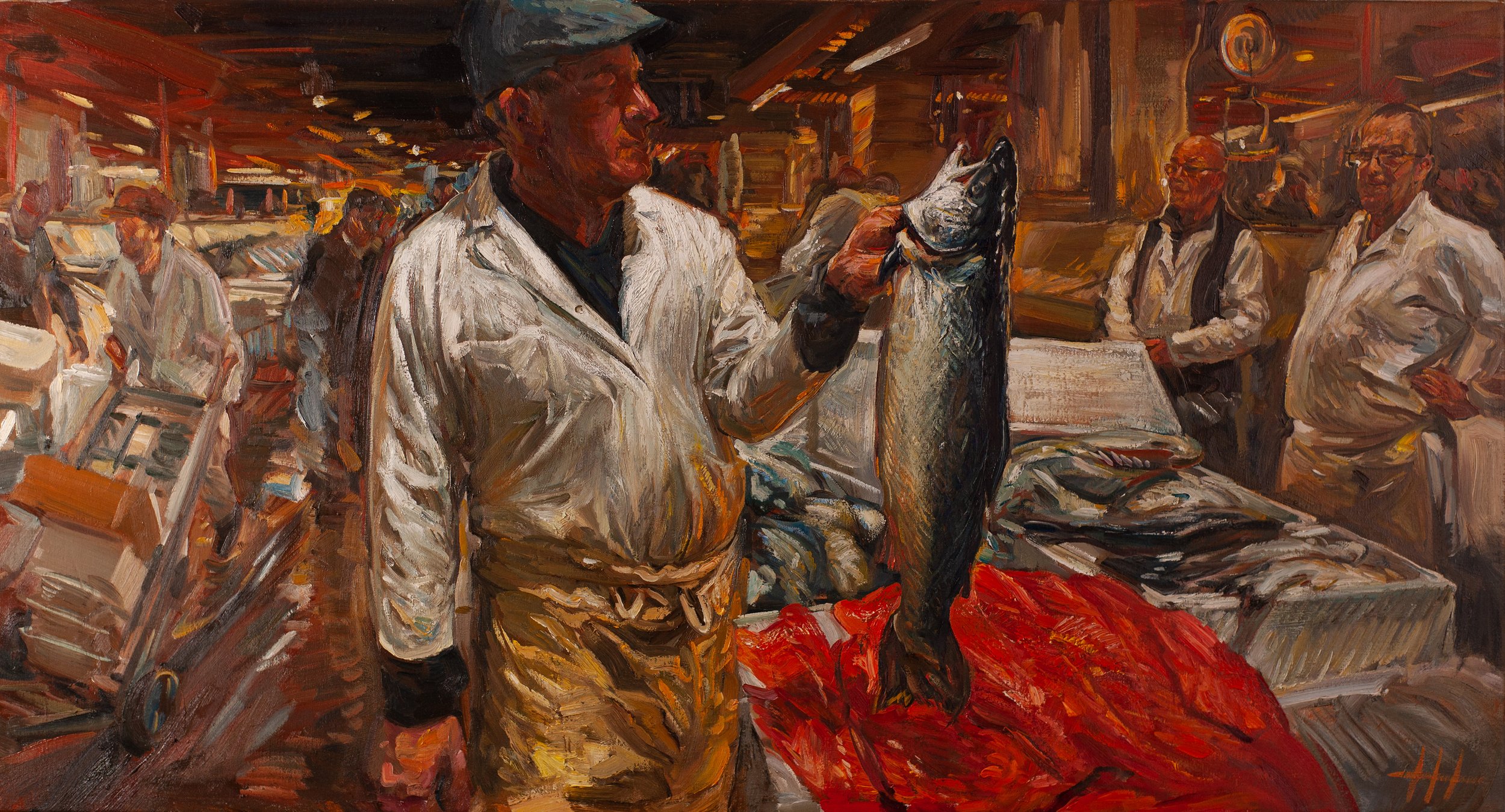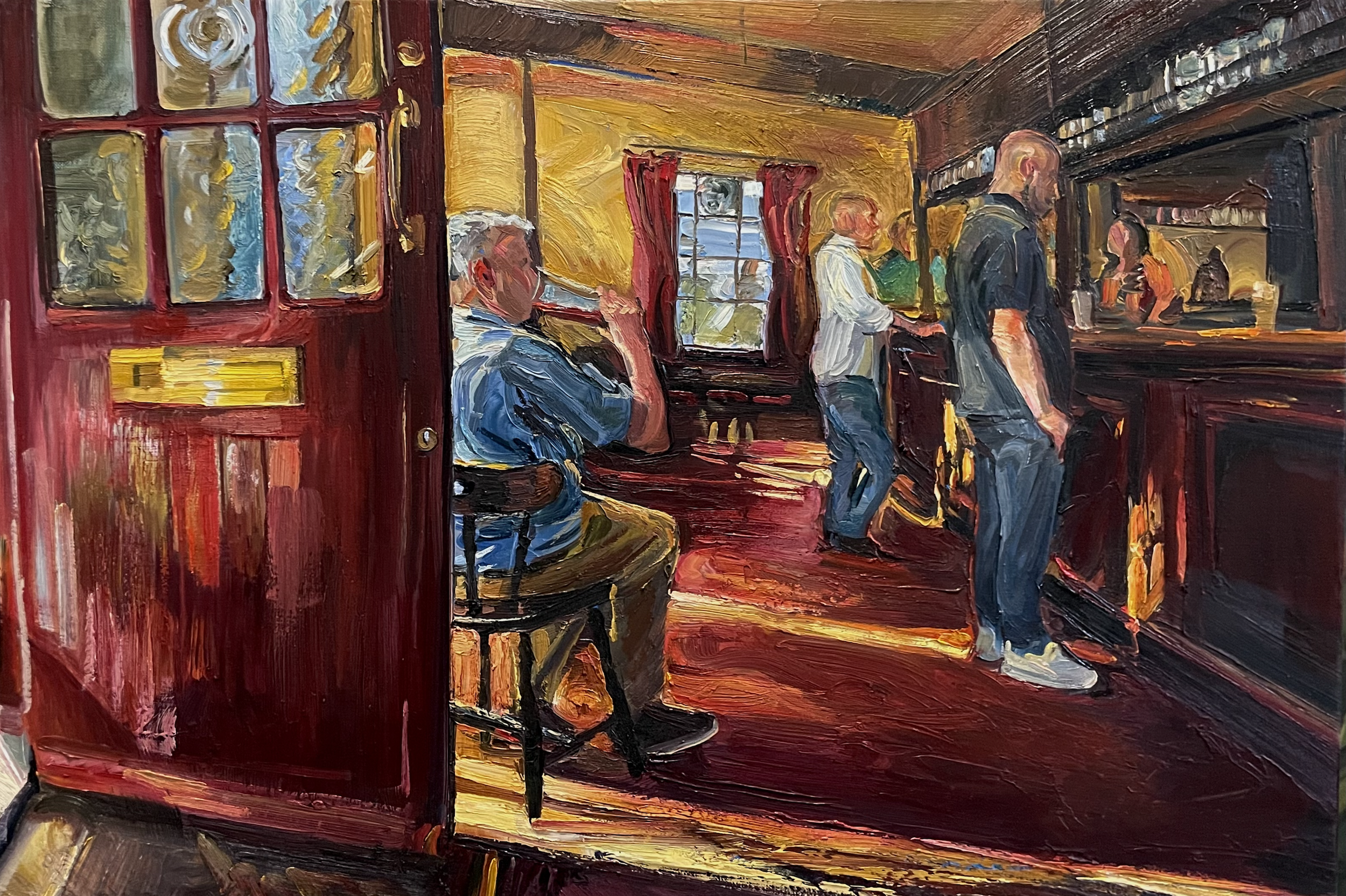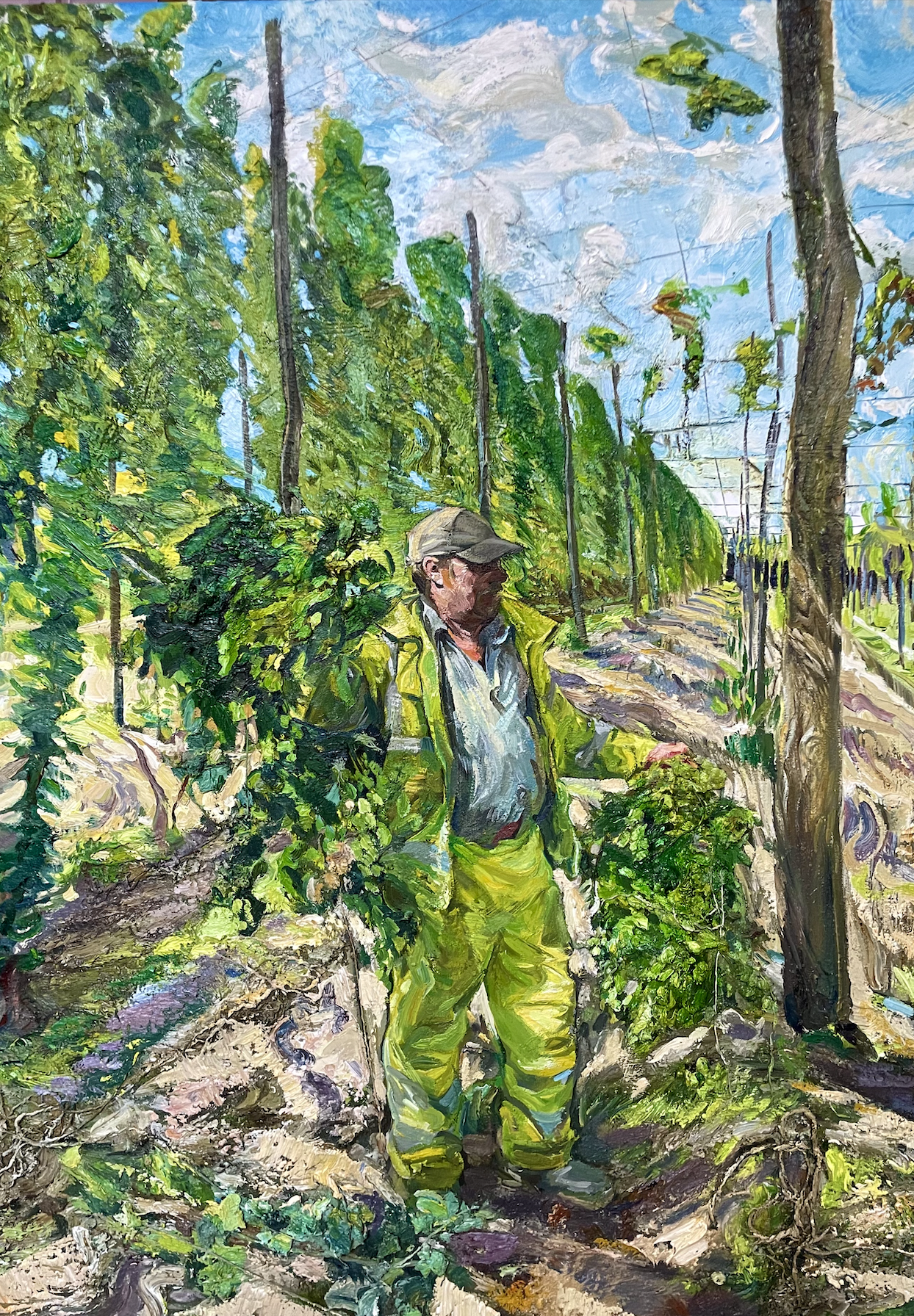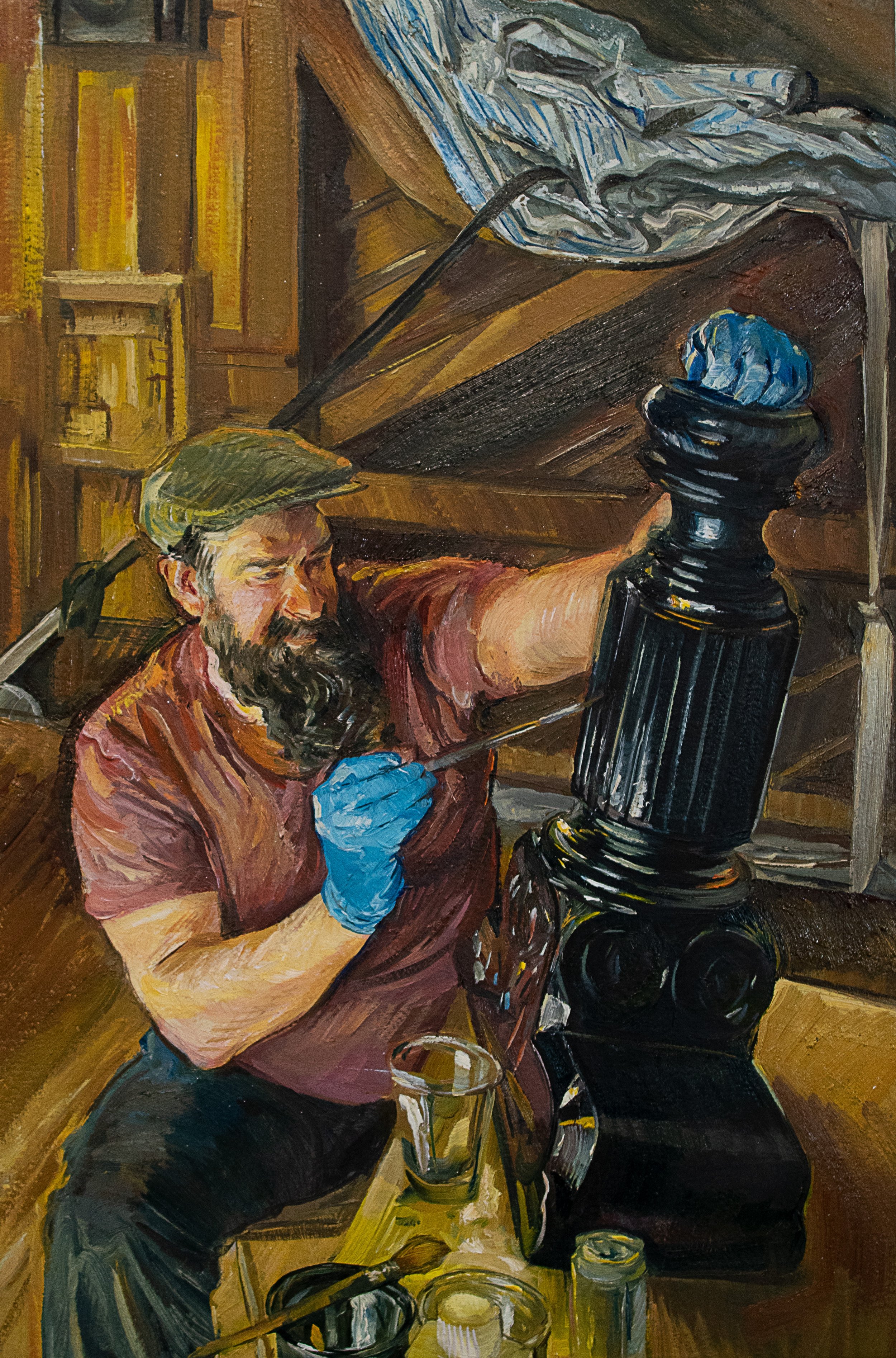ARTIST INTERVIEW: Lewis Hazelwood-Horner
Tell me about yourself and your journey to becoming an artist. What inspired you to paint?
Artists paint today to express ideas, emotions, and perspectives uniquely. The act of creating offers a sense of fulfillment, whilst also hoping to create a piece that can inspire, provoke thought, or communicate messages beyond words. The core reason why I started drawing was because I grew up in a creative household with parents who encouraged learning the different forms of art outside of a school setting.
Your series ‘Billingsgate’ is inspired by your fascination with the Thameside fishing market. What is it that you find interesting about this subject? What stories would you like to tell with your Billingsgate work?
My interest in the ‘Billingsgate’ story stems from a fascination with the Thameside fishing market; work generally considered menial by our society, yet carried out with a great deal of pride and passion by those small communities involved. These groups have often functioned as their own micro-cultures; by turfing them, longstanding heritage and identity disappears. Seeing works like Victor Gabriel Gilbert ‘A Corner of the Fish Market, Morning’ and Joaquins Sorolla’s ‘The Tuna Catch, Ayamonte’, inspire me to the point at which I feel a need to paint this fish market theme and relate it to my surroundings. I would hope that each individual painting is able to hold its own as a standalone piece.
How have your surroundings influenced your paintings? Where do you find your inspiration?
Inspiration doesn't come to the lazy and I find if I spend too much time mulling over ideas in the studio, then creativity becomes a bit stagnant. So, I try to split up my week by going out to sketch or exercise which involves meeting new people that both inspires and encourages new ideas in me. I aim to have a contemporary art position which benefits by (mostly) quoting physicist Richard Feynman: “Remain always uncertain. In order to make beauty, one must leave the door to the unknown ajar.”
Many of your works focus on individuals who have an endangered craft. Why is this an important subject for you? What is your process for creating one of these paintings?
Observing my grandfather's carpentry work as a child inspired creativity and appreciation for craftsmanship. This exposure to such activities in childhood has fostered interest in art and design, leading to the pursuit of painting the theme. I have a profound admiration for Artisans who’ve honed their craft. Personally, I admire the emotive transference that takes place in hand-craftsmanship. These affective traces between the crafts(wo)man and their art; their aura cannot be replicated by inhuman hands. Most paintings start as a series of graphite sketches made in my moleskin and then, if successful, I return to make oil sketches/colour studies with my pochade that can work as standalone pieces or are used in the studio as aids for when creating a larger scale piece. If I have decided to paint a larger piece then depending on the availability of the model, I will either paint the piece in the sight size method solely from life or if the model is pressed for time then I'll work from the studio using the graphite sketches, colour studies and photo references to accomplish the painting.
What do you think makes your work unique?
I don't see my pub paintings as being wholly unique as I can see many artists before, like Jan Steen, who have painted the theme of tavern scenes (and I encourage any artist who will listen to go and paint the theme also). However, where I consider my work to be unique is that every line is made by my own hand just like the emotive transference that happens in hand-craftsmanship.
Who is your favourite artist? If they were sat next to you right now, what would you ask them?
I consider myself still a young artist and I would hope that I have a long career ahead of me so, it's not the time to look back at what I've done but rather contemplate what can be done in the future as it is full of possibilities and potential, it's the reason I continue to paint because each day I feel I'm rising to the challenge of producing work that's new and better than anything I've done before.
Why do you think art is important in society?
Art is incredibly important; I value its ability to connect us with each other, to humanize us, and to help us understand the world in new ways. It's when times are hard and we are looking for a way to describe a new feeling, that we likely turn to a form of Art for some sort of comfort, poems for example are often read at funerals as a way to allow individuals to connect with each other, as well as with their emotions, values, and beliefs.










